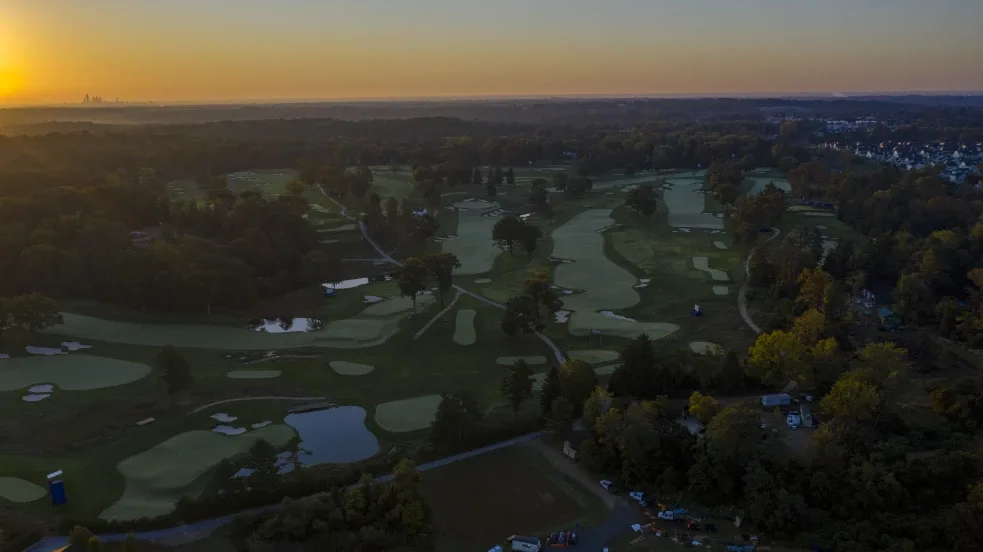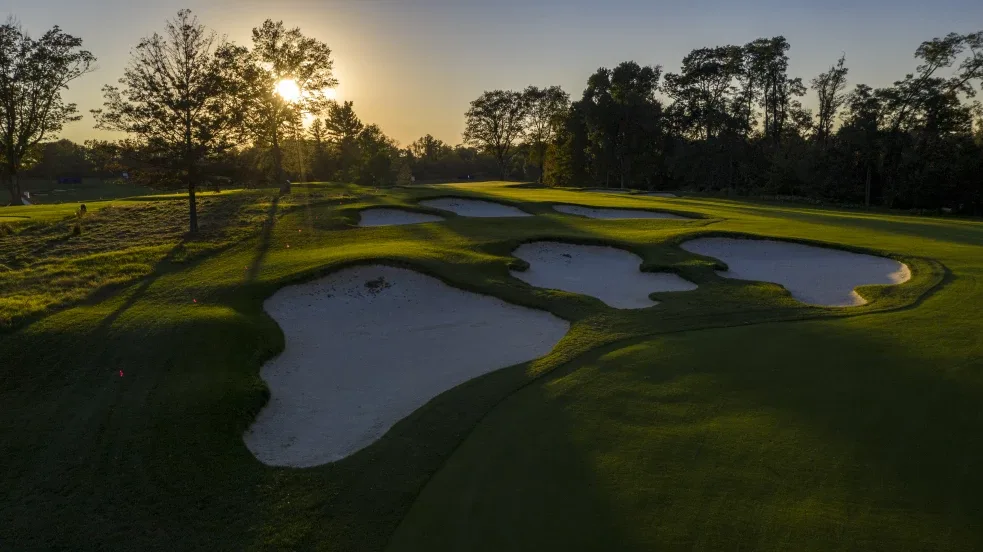Course Spotlight
The Sink at the Mink: How a Distinctive Property and a Donald Ross Routing Create Variety at Aronimink Golf Club
By Andy Johnson, The Fried Egg & Guest Reporter for PGA.com
Published on
Philadelphia is one of the best golf cities in the world. Thanks to tumbling terrain and a lively golf architecture community in the 1910s and 20s, the city has a stout roster of classic courses. Philly was home to several legendary Golden Age architects—including A.W. Tillinghast, William Flynn, George Thomas, Hugh Wilson, and George Crump—who left behind pathbreaking designs at Merion, Pine Valley, Philadelphia Cricket Club, Huntingdon Valley, and more.
Of the city’s premier courses, only one was built by an outsider: Aronimink Golf Club, designed by Donald Ross in 1928. After a restoration by Hanse Golf Course Design in 2016, Aronimink reclaimed its place as the finest course in Philadelphia created by a non-Philadelphian. This week, it hosts the top golfers in the world at the KPMG Women’s PGA Championship.
Twenty years after its construction, Ross said of Aronimink, “I intended to make this course my masterpiece, but not until today did I realize I built better than I knew.” Fans of Seminole, Oakland Hills, and Pinehurst No. 2 may take issue with that statement, but a tour of Aronimink’s property makes clear why the architect felt that way. It’s a unique piece of land, and Ross uses it ingeniously.
The bathroom sink
By Philly standards, Aronimink’s terrain is understated. The city and its suburbs are characterized by muscular topography with abrupt, rolling features. The land at Aronimink is more subtle. What the property does have, however, is a distinctive shape, something like a large bowl—or what I like to think of as a bathroom sink. While lacking severe undulations, this sink gave Ross plenty to work with in laying out the course.
To understand the routing at Aronimink, imagine how you would arrange a set of golf holes in and around your bathroom sink. You could have some that play into the sink (downhill) or out of it (uphill), and you could have others that run along the sides of the bowl, creating sidehill lies. You might even put a few on the countertop. In other words, by exploring the simple shape of a bathroom sink, you could create a great deal of variety. That’s exactly what Ross did at Aronimink.

Into the sink
Many holes at Aronimink dive into the sink with downhill shots off a tee or into a green. The par-4 10th, for instance, plunges to a green that, along with the nearby 8th, forms the “drain” at the base of the property.

Out of the sink
Conversely, other holes at Aronimink start near the drain and finish with uphill shots to greens. The par-5 9th and the par-4 18th are two examples, running parallel to each other, up and out of the sink, to the stately clubhouse. These holes share bunkers on their approaches, and each has a memorable green. The 18th features a valley cutting through its interior, and the 9th has bold exterior contours that send incoming shots in various directions.

The counter
These are the flattest holes at Aronimink, but Ross gives them flair with some of the course’s most dramatic bunkering. Nos. 2, 3, and 13 have clusters of bunkers either guarding the ideal lines into the greens or tricking players’ eyes off the tee. This bunkering, both visually appealing and strategically functional, generates interest on the property’s least interesting land.

Along the sides
The most challenging golf at Aronimink is along the sides of the sink. These holes—6, 7, 15, and 16—have fairways draped across significant slopes. You have to account for these grades off the tee, as drives that land on the low half will often kick into the rough. On approach shots, players must reckon with sidehill lies that exert a strong influence on shot shape.

At Aronimink, Donald Ross confronts you with a variety of challenges, from crowds of bunkers to undulating greens to fairways that hardly ever use the terrain the same way twice. One could say he throws everything at you, including the bathroom sink.
